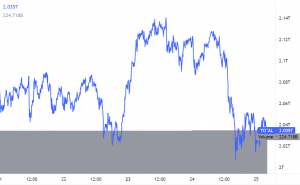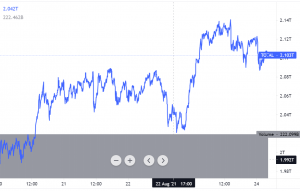
AWS Backs $100,000 Competition to ‘Change the Face of Blockchain’
The problem: Given 1024-bit input x, compute the verifiable delay function ‘h=x^(2^t) mod N’ as fast as possible.
t=2^30
N=12406669568412474139879892740481443274469842712573568412813185506497689533
7309138910015071214657674309443149407457493434579063840841220334555160125016
3310409336906745695712173376302391915172057213101976083872398463643608502208
9677296497856968322944926681990341411705803010652807392863301711868982662559
4484331
If you can understand the above, you could be in for a portion of a $100,000 prize – that is, if you can then beat the others attempting to calculate the answer with the greatest speed improvement.
The highly technical conundrum has been posed to coders in a competition supported by Amazon Web Services (AWS) that aims to “change the face of blockchain,” as well as how hardware is designed and made.
Launched by the VDF Alliance, the competition aims to solve how to calculate something called the verifiable delay function (VDF) in the shortest time.
In its announcement, AWS paraphrases Justin Drake, a researcher with the Ethereum Foundation, explaining that “VDFs are a low-level building block in cryptography, barely more than a year old. It’s the “V” or ‘verifiable’ in VDF that makes the approach so unique.”
“It’s trustless,” according to Drake. “For the first time, it adds this notion of time with which you can build all these cool things.”
Included in the “cool things” promised by VDF tech is “unbiased proof of randomness.” Effectively, it could enable trustless, truly random number generators on blockchains. Currently, these are pseudo-random and can be exploited by bad actors by effectively being able to guess the number. With true randomness, that wouldn’t be possible.
If the tech can be advanced sufficiently it could help to move blockchain such as ethereum from the energy-intensive and hence costly proof-of-work algorithm to one called proof-of-stake.
“The Ethereum ecosystem alone currently uses on the order of 850 megawatts to extend blocks. That’s about $460 million in running costs per year,” said Tim Boeckmann, senior startup business development manager for AWS in the U.K. “With VDFs in Ethereum, there is an opportunity to bring down that cost to less than $0.13 million for the 0.25 megawatts of energy to power the hardware random beacons.”
In fact, the competition is being held in partnership with the Ethereum Foundation, as well as other alliance members, the Interchain Foundation, Protocol Labs, Supranational, Synopsys, and Xilinx, which are sponsoring the event “with support from AWS.”
As reported by CoinDesk previously, the Ethereum Foundation is already working on the VDF problem, revealing in February that it was considering spending $15 million in the search for true randomness.
VDFs are envisioned for use in ethereum’s much-anticipated proof-of-stake system called Serenity, to which the ethereum network will migrate in the next few years.
The first round of the competition will run till the end of September, and will award prize money to the fastest design that solves the problem at the top of this article.
In the initial round of the competition, successful entrants will be awarded $3,000 for every nanosecond improvement. Full details can be found here.
Drakes suggests that those entering will need a blend of skills.
“You are going to need people who are really good at hardware design, but also people with algorithmic skills,” he said. “My guess is the winning team will have a combination of that expertise.”
AWS image via Shutterstock
Source: coindesk.com
View original post





